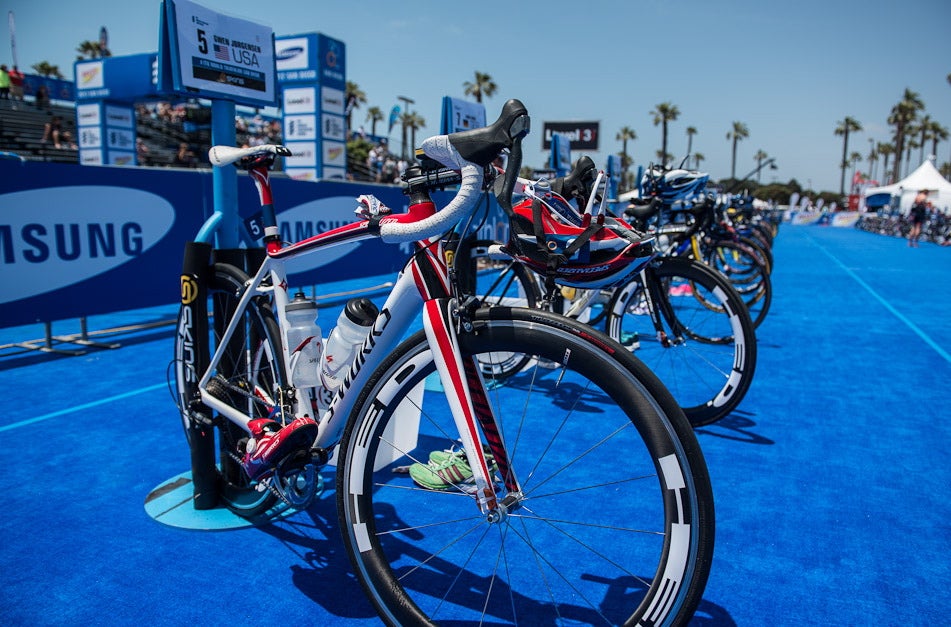Olympian-Worthy Bike Advice

Photo: Nils Nilsen
To prepare for draft-legal riding, 2012 Olympic team member Gwen Jorgensen had to take her bike skills from zero to 60. Steal some of these tips from her coach.
Although she came from a solid running program at the University of Wisconsin, Gwen Jorgensen had just started riding a bike when she met coach Cindi Bannink through the USAT Collegiate Recruitment Program in 2009. For the pack riding Jorgensen would be doing, Bannink, who was recently named USAT Coach of the Year, knew she needed to gain bike skills—fast. Here’s how she helped Jorgensen develop the skills she needed to go pro, nab an Olympic spot and hopefully medal in London this August.
PHOTOS: 2012 U.S. Olympic Team Member Gwen Jorgensen
Start with the basics
Because Jorgensen didn’t have the advantage of someone who’d been riding a bike for 10 years, she had a steep learning curve to catch up to the other athletes on the ITU circuit. Handling skills were initially a top priority. “We started in a parking lot just learning how to negotiate corners, starting slow and building up to race pace,” Bannink says. “First practicing alone, then following the wheel of an experienced rider and then negotiating with others around her. She practiced in both directions.”
Learn how to corner
“We would do ‘hot dogs,’ a course set up with a 180-degree turn at each end—learning to approach and choose a turn angle that allows you to ride out of the corner faster, and then punching it up to speed coming out of the turn,” Bannink says. Although cornering comes into more often in crit-style ITU racing, age groupers can benefit from learning to round corners faster and more efficiently, as to not waste seconds on the race course. Test your skills on a mock set-up in a parking lot.
Practice bike control
“We practiced riding close to others and placing a hand on a partner’s shoulder to get used to riding close and maintaining control of the bicycle,” Bannink says. Your riding partners might not appreciate a shoulder pat during your weekend ride, but bike control is important when riding with or around others. Here’s a good test of your control: Can you grab your water bottle and put it back without looking down at your bike frame?
Consider bike races
“To put all her skills into practice in a race setting, Gwen has started participating in some bike races. This really helps reinforce the skills and allows her to assess where she is doing well and which areas need improvement.” Bannink suggests beginners find local cycling-focused clinics focused and progress to cycling-friendly events. “Bike racing has really catapulted her cycling and her being comfortable riding in a pack. She has the good fortune to work with some pro-level bike racers that have helped along the way.”